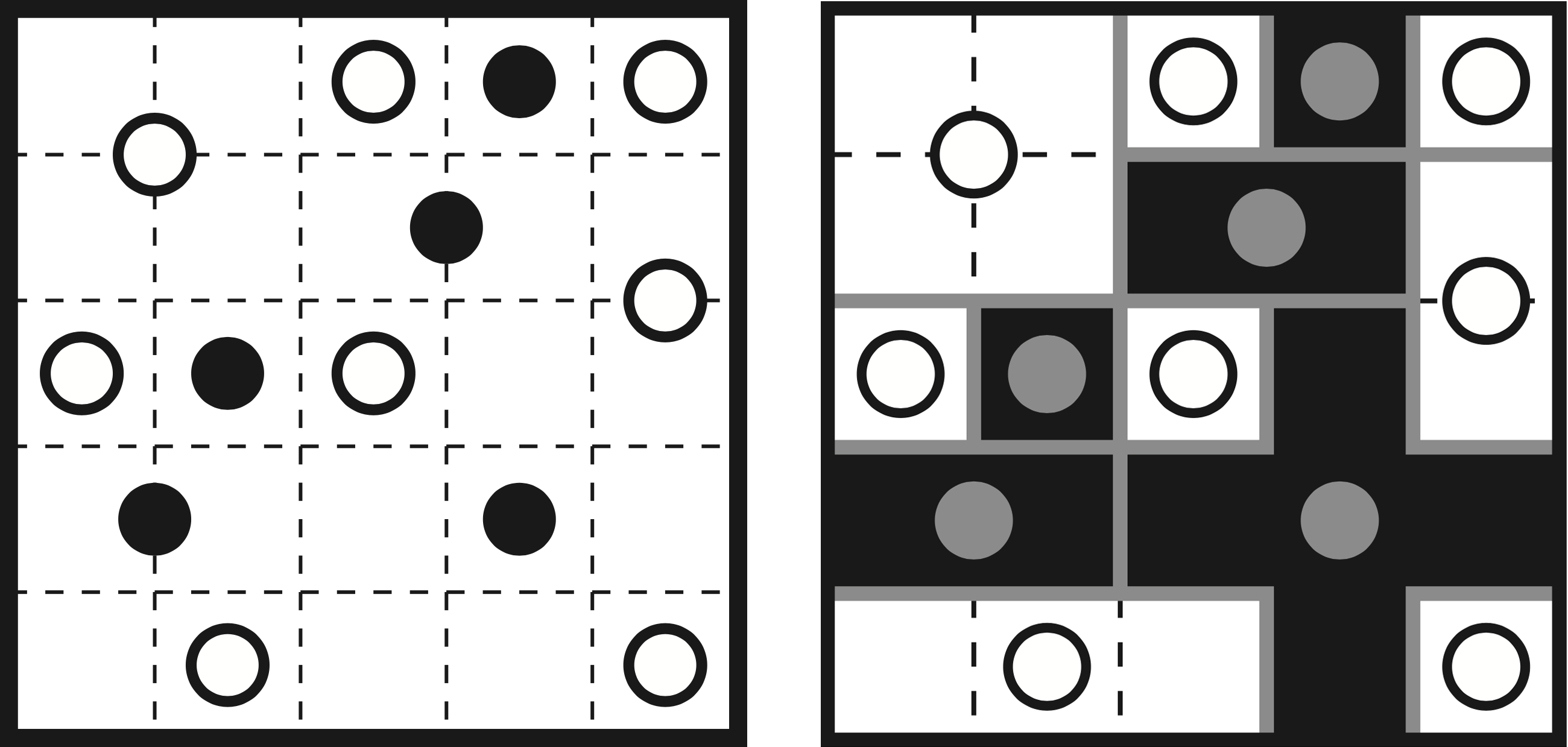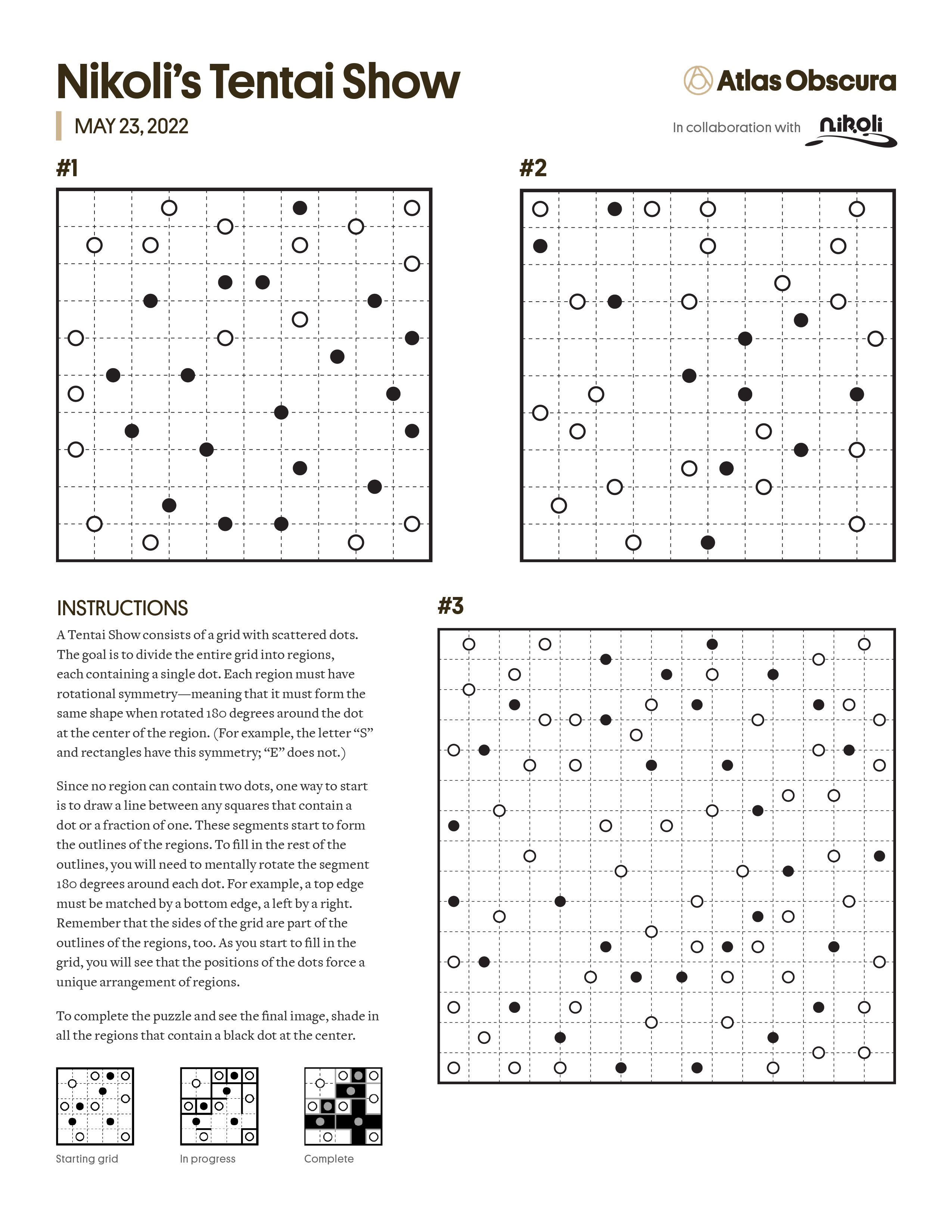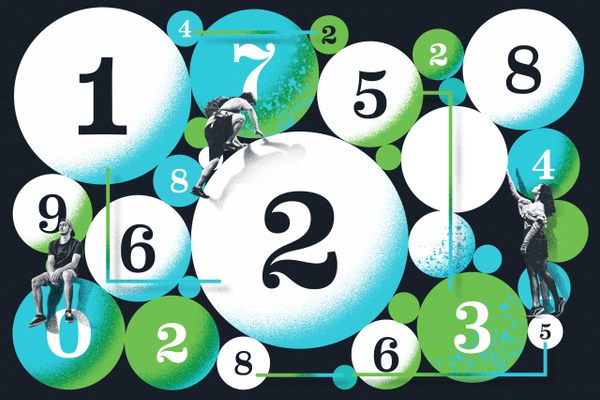
Puzzle Monday: Logic, Symmetry, and Astronomy
Editor’s Note, November 2024: Thanks for checking out our puzzle archive! While the online version of this puzzle is no longer interactive, we suggest downloading the PDF, available below. You can find other archived puzzle PDFs available for download here.
Among our crosswords and other puzzles, we’ll be featuring logic challenges from Puzzle Communication Nikoli, a cult-favorite puzzle publication from Japan. A PDF of the puzzle, as well as the solution, can be downloaded below.
Gesaku got his ideas from the things that he saw around him every day: the design of floor tiles on a subway platform or the ripples in a pond. Gesaku—the only name by which he is known—was a dedicated reader of Japan’s Puzzle Communication Nikoli, the most influential puzzle publication in history. Nikoli is famed not just for making Sudoku a household name, but also for being created almost entirely by fans like Gesaku.
Many of those readers submit hand-crafted examples of existing puzzles. Gesaku was one of the rare readers who created his own, and he was one of Nikoli’s most prolific. More than 30 of his original puzzles have been chosen for publication; only two or three creators have managed this feat in Nikoli’s more than four decades of publication.
Shapes and mathematical regularity were Gesaku’s muses, according to Nikoli president Yoshinao Anpuku. Anpuku had spoken with Gesaku in the past, but the magazine has lost touch with him, and it’s unknown if he’s still making puzzles.


Gesaku’s Tentai Show debuted in 2001 as a logic puzzle based on filling a grid with symmetrical shapes—recalling origami, celestial bodies such as galaxies and stars, and traditional Japanese clan symbols. The puzzle was modestly received at first, but six months later Gesaku came up with an idea that made Tentai Show one of Nikoli’s most beloved reader creations—using solving logic to create a picture, making each one a kind of puzzle-based constellation.
This connection with the celestial is reinforced in the puzzle’s pun-based name. “The Japanese word ten-taisyo means ‘symmetry about a point,’ while the word tentai means ‘heavenly body,’ such as a star,” writes author Alex Bellos in his book about Japanese logic puzzles, Puzzle Ninja. “Tentai Show is thus an anglicized pronunciation of point symmetry with a double meaning of ‘astronomical show.’”
A Tentai Show consists of a grid with scattered dots. The goal is to divide the entire grid into regions, each containing a single dot. Each region must have rotational symmetry, meaning that it must form the same shape when rotated 180 degrees around the dot at the center of the region. (For example, the letter “S” and rectangles have this symmetry; “E” does not.)

Since no region can contain two dots, one way to start is to draw a line between any squares that contain a dot or a fraction of one. These segments start to form the outlines of the regions. To fill in the rest of the outlines, you will need to mentally rotate the segment 180 degrees around each dot. For example, a top edge must be matched by a bottom edge, a left by a right. Remember that the sides of the grid are part of the outlines of the regions, too. As you start to fill in the grid, you will see that the positions of the dots force a unique arrangement of regions.
To complete the puzzle and see the final image, shade in all the regions that contain a black dot at the center.
In the downloadable PDF below, you’ll find the instructions above, an example, three puzzles of increasing difficulty, and an Atlas Obscura surprise.

Stumped? Download the solutions!








Follow us on Twitter to get the latest on the world's hidden wonders.
Like us on Facebook to get the latest on the world's hidden wonders.
Follow us on Twitter Like us on Facebook